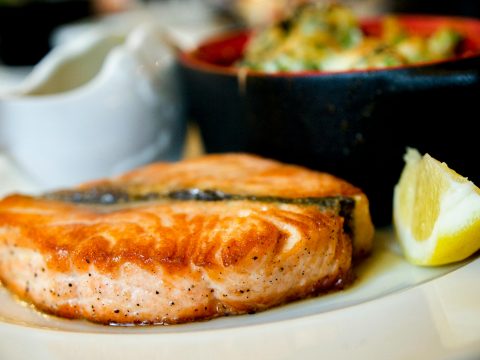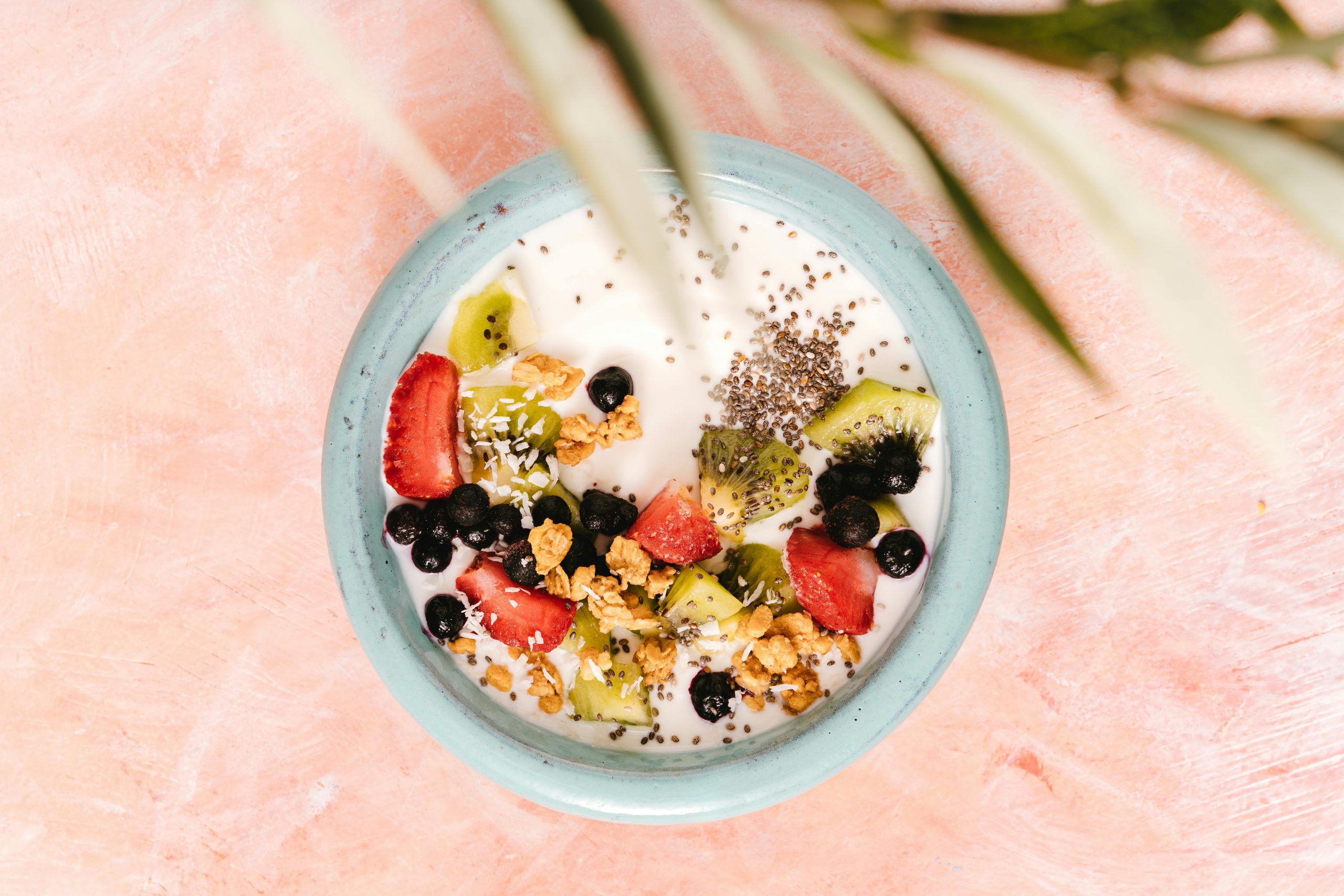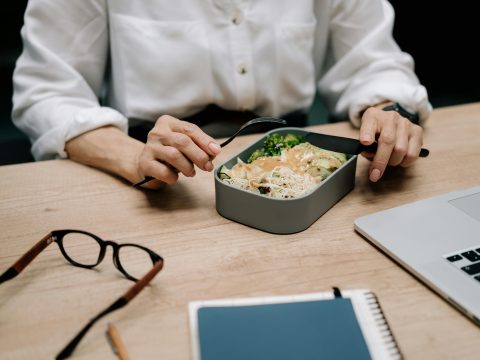Disclaimer: Healthy Lunches. This site provides food and drink content for informational purposes only.
Managing diabetes means more than avoiding sugar—it’s about controlling how foods impact your blood sugar, energy, and long-term health. One of the most reliable dietary strategies for doing just that? High protein meal prep.
For diabetics, prepping meals in advance with a focus on lean protein sources helps regulate glucose, promotes satiety, and ensures nutrient-dense eating all week long. This guide will explain why protein is so important for diabetic health, what to include (and avoid), and how to build tasty, blood sugar-friendly meals that don’t feel like a diet.
Why High Protein Meal Prep Works for Diabetics
1. Stabilizes Blood Sugar Levels
Protein has a low glycemic index, meaning it doesn’t cause significant spikes in blood glucose. When combined with fiber and healthy fats, it helps slow down the absorption of any carbohydrates eaten in the same meal, reducing blood sugar spikes and crashes.
For example, a grilled chicken breast paired with sautéed spinach and roasted sweet potato is absorbed far more gradually than a bowl of white rice alone.
2. Promotes Fullness and Reduces Cravings
High protein intake activates satiety hormones like peptide YY and GLP-1, which tell your brain you’re full. This can be particularly helpful for diabetics aiming to control their weight and avoid impulsive snacking that may affect blood sugar levels.
3. Supports Muscle Mass and Insulin Sensitivity
As we age, or with certain medications and insulin resistance, muscle mass can decline. High protein diets support muscle repair and maintenance, especially when paired with resistance exercise. Maintaining muscle also improves insulin sensitivity, helping the body process glucose more efficiently.
4. Helps with Calorie Management
Protein has a higher thermic effect of food (TEF) compared to carbs or fat, meaning your body uses more energy digesting it. This can slightly increase daily calorie burn and support weight management.
Essentials of High Protein Meal Prep for Diabetics
To build smart and balanced meal prep plans, follow these tips:
1. Choose Lean Proteins
- Chicken breast
- Turkey
- Tofu
- Tempeh
- Eggs
- Salmon
- Tuna
- Greek yogurt (plain, unsweetened)
- Lentils and legumes (watch portions for carb content)
2. Pair Protein with Fiber-Rich Veggies
Fiber helps further regulate blood sugar and improves gut health. Great options include:
- Broccoli
- Spinach
- Zucchini
- Cauliflower
- Bell peppers
- Kale
- Green beans
3. Include Healthy Fats in Moderation
Fats also slow digestion and support heart health.
- Avocado
- Olive oil
- Chia seeds
- Flax seeds
- Nuts (almonds, walnuts)
4. Watch Carbohydrate Quality and Quantity
Stick with complex carbs in moderation:
- Quinoa
- Sweet potatoes
- Brown rice (small portions)
- Chickpeas (watch quantity)
- Whole oats
Sample Weekly High Protein Meal Prep Plan
Here’s a balanced and diabetes-friendly high protein meal prep plan that covers five days. Each meal includes lean protein, non-starchy vegetables, and smart fats and carbs.
Day 1-5: Breakfast Ideas
- Egg Muffins with Spinach and Turkey Sausage
- Make a batch of 12 and store in the fridge.
- Ingredients: Eggs, turkey sausage, chopped spinach, diced tomatoes, onion, salt, pepper.
- Greek Yogurt with Chia and Berries
- Use unsweetened Greek yogurt.
- Add 1 tablespoon chia seeds and a small handful of berries (blueberries or raspberries).
Day 1-5: Lunch Ideas
- Grilled Chicken Quinoa Bowls
- Ingredients: Grilled chicken breast, quinoa (1/2 cup), roasted bell peppers, broccoli, olive oil drizzle.
- Optional: Add a sprinkle of feta cheese.
- Tuna and White Bean Salad
- Ingredients: Tuna in water, canned white beans (rinsed), cherry tomatoes, red onion, olive oil, lemon juice, parsley.
Day 1-5: Dinner Ideas
- Baked Salmon with Roasted Veggies
- Ingredients: Salmon filet, zucchini, cauliflower, red onion, olive oil, lemon, dill.
- Roast everything on a sheet pan and store in portions.
- Turkey and Lentil Chili
- Ingredients: Lean ground turkey, cooked lentils, canned diced tomatoes, garlic, onion, chili powder, cumin.
- Portion into containers and freeze half for future weeks.
Smart Snacking for Diabetics
Snacks can either stabilize or derail blood sugar. These high-protein snack options are smart choices:
- Hard-boiled eggs
- Celery sticks with almond butter
- Low-fat cheese sticks
- Roasted chickpeas (small portions)
- Edamame
- Sliced turkey roll-ups with cucumber
- Protein smoothie with unsweetened almond milk, spinach, and a scoop of protein powder
Food Safety and Storage Tips
- Refrigerate meals within two hours of cooking.
- Label and date all containers.
- Use glass containers or BPA-free plastic.
- Most meals last 3–5 days in the fridge or up to 3 months in the freezer.
Batch Cooking Tips
- Double up on proteins during prep: Grill chicken, bake salmon, and cook lentils all at once.
- Use sheet pans for roasting multiple vegetables at once.
- Make sauces or dressings ahead of time (e.g., lemon-tahini, yogurt-herb).
- Invest in good storage containers that seal well and are portion-sized.
3 More High Protein Meal Prep Recipes for Diabetics
1. Turkey and Zucchini Meatballs
- Mix ground turkey, shredded zucchini, egg, onion, garlic, parsley, pepper.
- Bake at 400°F for 20–25 minutes.
- Serve with cauliflower rice and sautéed kale.
2. Tofu Stir Fry with Broccoli and Bell Peppers
- Cube extra-firm tofu and pan-sear until golden.
- Stir fry with low-sodium soy sauce, ginger, garlic, broccoli, and peppers.
- Serve with a small portion of brown rice.
3. Cottage Cheese Power Bowl
- 1/2 cup cottage cheese, sliced cucumbers, cherry tomatoes, avocado, boiled egg, sprinkle of hemp seeds.
- Drizzle with lemon juice and cracked pepper.
Portion Control and Blood Sugar Monitoring
For diabetics, portion control is a critical aspect of managing blood sugar levels. It helps prevent overconsumption of carbohydrates, which can cause blood sugar spikes, while still providing adequate nutrition. Here are some tips to help you maintain portion control and monitor your blood sugar effectively:
1. Use a Food Scale or Measuring Cups
A food scale is an excellent tool for ensuring you are sticking to recommended serving sizes. For example, a typical portion of cooked chicken breast is around 3–4 ounces, or the size of a deck of cards. For grains like quinoa or brown rice, aim for around 1/2 cup per serving. Using a food scale or measuring cups for accurate portions can help prevent overeating and make meal planning more predictable.
2. The Plate Method
A simple way to balance your plate and manage portions is the “plate method.” This technique is particularly useful for diabetes management:
- 1/2 Plate of Non-Starchy Vegetables: Vegetables like leafy greens, broccoli, and bell peppers are low in carbs and high in fiber, making them an excellent choice for blood sugar control.
- 1/4 Plate of Lean Protein: Foods like chicken, turkey, fish, or tofu should make up about 25% of your meal. Protein stabilizes blood sugar and keeps you feeling full longer.
- 1/4 Plate of Complex Carbs: Opt for healthy, whole grains like quinoa, brown rice, or sweet potatoes. These provide fiber, which slows the absorption of glucose and helps stabilize blood sugar levels.
3. Monitor Your Blood Sugar
Tracking your blood sugar levels after meals can help you understand how your body responds to different food combinations. For instance, if you notice your blood sugar spikes after eating a certain meal, consider adjusting the carbohydrate portion, the type of protein, or the inclusion of fiber-rich vegetables. Over time, you’ll get a better sense of what works best for your body, allowing you to fine-tune your meal prep strategies.
4. Avoid the “Clean Plate Syndrome”
It’s easy to overeat when food is in front of you. If you’ve prepared meals in advance, use portioned containers so that you’re less likely to overeat. When eating out, try using a smaller plate or asking for half of your meal to be packed up to-go before it’s served.
Grocery Shopping Tips for Diabetic Meal Prep
When it comes to managing diabetes through food, your grocery shopping habits are just as important as the meals you prepare. Planning ahead and choosing the right ingredients can help ensure that you’re always stocked with healthy, high-protein options that are both blood sugar-friendly and delicious. Here are some key grocery shopping tips to help you make the best choices:
1. Stick to the Store’s Perimeter
Most grocery stores are laid out in a way that the healthier, less processed items are located around the perimeter. You’ll typically find fresh produce, meats, dairy, and frozen vegetables in these areas. Stick to these sections as much as possible to avoid high-sugar, processed foods found in the aisles. This helps you focus on whole, nutrient-dense foods like lean proteins, non-starchy vegetables, and healthy fats.
2. Read Labels for Hidden Sugars
When purchasing packaged foods, always read labels carefully for added sugars or high-glycemic ingredients. Many sauces, dressings, and pre-packaged meals contain hidden sugars, which can lead to blood sugar spikes. Opt for no-sugar-added sauces or make your own (like homemade vinaigrettes or marinara sauces). Also, check for “sugar alcohols” or “high-fructose corn syrup,” which can raise blood glucose levels.
3. Stock Up on Pantry Staples
Having a well-stocked pantry is essential for easy meal prep. Here are some diabetic-friendly pantry staples to keep on hand:
- Canned tuna or salmon (in water, not oil)
- Dried lentils and beans
- Low-sodium broths
- Quinoa and brown rice
- Nuts and seeds (almonds, walnuts, chia, flax, and hemp seeds)
4. Buy in Bulk
Purchasing lean meats like chicken breast, turkey, or fish in bulk can save money and ensure that you always have protein on hand. Freeze extra portions for later use to avoid waste. Similarly, buying whole grains and legumes in bulk can also help save on cost and allow you to prep larger batches of meals.
5. Don’t Forget Fresh Produce
Aim to fill your cart with a variety of non-starchy vegetables like leafy greens (spinach, kale), cruciferous vegetables (broccoli, cauliflower), and colorful bell peppers and zucchini. These are high in fiber and low in carbohydrates, making them the perfect addition to any meal. The more variety you get, the more nutrients you’ll have in your diet.
Final Thoughts
High protein meal prep for diabetics doesn’t mean boring food or bland flavors. With smart ingredient choices and a bit of batch cooking, you can enjoy balanced, satisfying meals that support your health goals. Whether you’re managing type 1 or type 2 diabetes, incorporating more protein into your prep can keep blood sugar levels steady, energy levels up, and meal decisions stress-free.
Start small by prepping just breakfasts or lunches, and expand as you get more comfortable. Consistency is key, and with time, you’ll discover how powerful a well-prepped fridge can be for your health and peace of mind.



